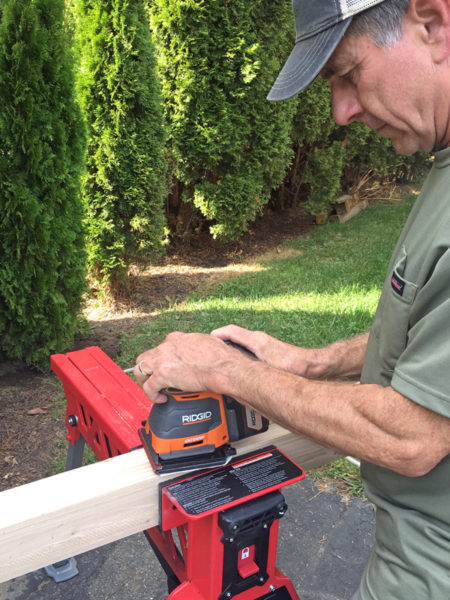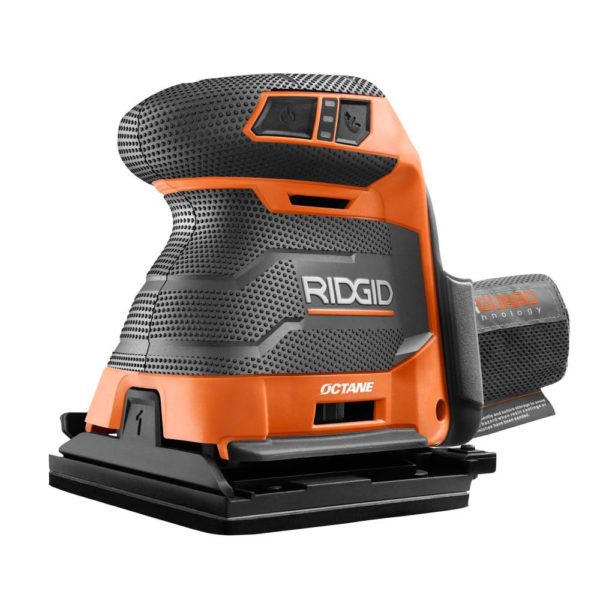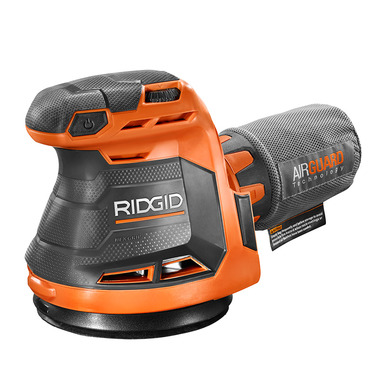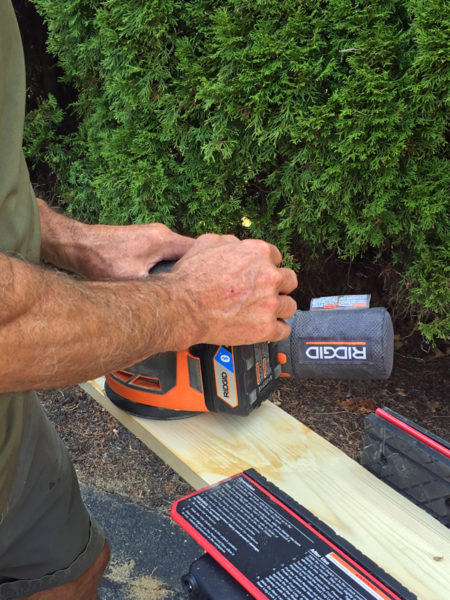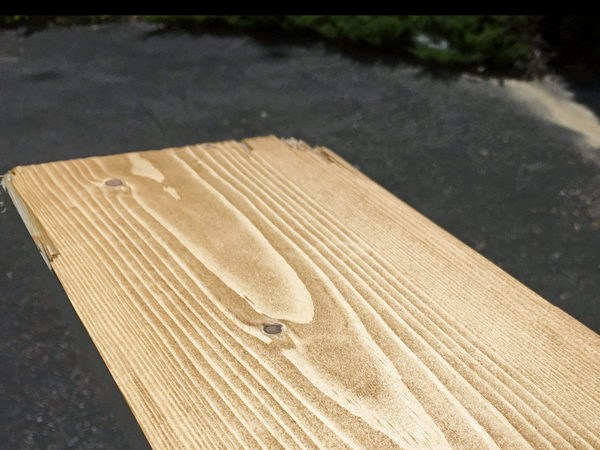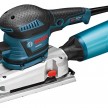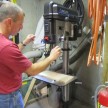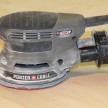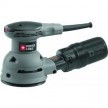RIDGID Cordless Random Orbital and Sheet Sander Review
RIDGID Cordless Random Orbital and Sheet Sander
By Ralph Mroz
All carpenters need sanders. But do you need cordless sanders? Well, the answer to that question is like the answer to most of life’s questions: it depends. So, let’s take a closer look at the question and the RIDGID cordless sander.
Controlled vs. Jobsite Environments
If you work in a shop doing regular, predictable sanding, you might be able to get away with corded sanders. Shops are controlled environments, usually set up for your convenience, and often relatively spacious (at least compared to a jobsite). Here at the shop we can set it up to accommodate regular sanding and avoid the cord getting in your way. And of course, all that regular sanding won’t be interrupted by battery changes.
However, if you’re working on a jobsite your sanding needs are far less predictable and come up on nearly a daily basis. In these less than regular situations and locations that you don’t control, the convenience of a cordless sander will often be what you need. The only real downside to a cordless sander is the added weight of the battery.
Let’s look at it another way: if you’re in a shop making cabinets, you may be fine with a corded sander. But on a jobsite installing cabinets, you’re probably going to want cordless ones.
Belt, ¼ Sheet & Random Orbital Sanders
The two sanders these days that get the lion’s share of the work are belt sanders and random orbital sanders. Belt sanders for removing large amounts of material quickly and random orbital sanders for medium-to-finish work. The non-random orbital (AKA “finish”) sanders still have a place though, albeit a diminished one.
Today’s ¼ sheet sanders can be used with regular sandpaper (cut to size), rather than special circular discs. They also let you utilize the huge variety of sandpaper that’s on the market, and there’s typically some of that available on any jobsite. Random orbital sanders are circular, while sheet sanders are square or rectangular, so they get into inside corners better. ¼ sheet sanders are usually less powerful and therefore some people prefer them for fine finish work. Although random orbital sanders can do that job well too with appropriate discs and technique.
Rob has already reviewed the RIDGID cordless belt sander here, so I’ll look at RIDGID’s cordless ¼ sheet and random orbital sanders below.
RIDGID Cordless 5-Inch Random Orbital Sander
RIDGID came to market with one of the first cordless random orbital sanders, and it was and still is very well received. The R8606 is a five-inch sander running on standard RIDGID 18-volt batteries that uses hook/loop backed sanding discs. It has six click-adjustable speeds from 7000 to 11,000 RPM. The soft start feature is welcome for those times when the sander is in contact with material at start-up.
The vendor literature says that this sander maintains full speed and power under a heavy load, and it actually does! I was surprised that I could bear down hard on the unit while sanding and it didn’t stall. Side note: You should not bear down hard on a random orbital sander though; yhe sander should do the work and you run the risk of divots and leaving marks if you press too hard. RIDGID claims approximately 40-minute run time at high speed with a 4-amp hour battery, which is confirmed by field experience. Another claim RIDGID has is that the included quick-release air bag captures 90% of the sawdust that the sander generates. That’s pretty much what I experienced. It left very little dust in the air whether in a shop or on the jobsite. If you want to capture all the dust, 1.25, 2.25, and 2.5 inch hoses will adapt to the sander. It comes with RIDGID’s Lifetime Service Agreement (with registration within 90 days of purchase).
RIDGID R8606 Sander
The R8606 has rubber over-mold on a 3/4 wrap vertical hand surface and on the top surface. I found that the battery also made a convenient hand hold. There’s almost no way that you can grip this sander that doesn’t provide an ergonomic feel. The power switch is sealed to keep out dust, which was a nice touch.
While the quality of the finish you get with a sander is usually more a function of the sandpaper rather than the sander itself, the sander still drives aspects of performance. One aspect of the sander’s performance is the sanding speed. I ran an experiment to measure using a Diablo 80-grit disc at high speed. I held the unit in place on a standard kiln dried pine 2X4 using about twice the pressure you need to normally operate the sander. In two minutes, it removed 1/4-inch of material.
RIDGID Performance
Another aspect of performance that the sander controls is the randomness of the plate movement. Typically, more random means fewer sanding marks, and vice versa. To quickly evaluate that, I set the speed at 4 (of 6) and sanded a piece of standard 1X #2 pine with Diablo 150 grit paper, then with a 220 grit disc. Professional woodworkers will tell you that you don’t want to go any finer than 220 grit because finer papers will polish the wood and not allow stain in evenly. I then wiped stain on the sanded section and examined it in a raking light. To the naked eye, no sanding marks or swirls were visible.
Like any new tool, it took me a few minutes to adjust to the weight, balance, and other forces generated by this sander. Once I got the feel of it, I was very comfortable using it. The vibration level was quite comfortable. The only thing I can say that wasn’t excellent for me, (subjective of course) was since I have slightly smaller than average hands the unit felt a little larger than ideal. However, it’s not larger than average for this type of sander.
RIDGID Cordless Brushless 1/4-Sheet Sander
RIDGID’s model 86064 is an 18-volt, brushless quarter sheet sander. It has three speeds, with the top end coming in at 14,000 RPM. Again, RIDGID claims that the filter captures 90% of the generated dust, and after some quick sanding that claim seems pretty spot on. The unit also accepts the most common vacuum hose sizes if you want to further minimize the dust. The sheet paper clip system is strong and easy to use (I’ve used far weaker and harder to use – this one is good). And of course, it comes with RIDGID’s Lifetime Service Agreement (must sign up within 90 days of purchase).
Remember earlier I mentioned that ¼ sheet sanders are often less powerful than random orbital sanders? Well, that’s certainly true at the lower speeds, but at high speed with the supplied 80-grit sandpaper sheet, (no brand name) it really removed material, so you get a bit more power with this finish sander than with others.
RIDGID 86064 Sander Features
grip areas and ergonomics of this sander are almost identical to the 8606 random orbital sander and all the comments about it apply here. In fact, if you didn’t see the bottom plate of these two sanders, you’d have a hard time distinguishing between the two. In addition, for those folks who want to save some money there’s a paper punch included so that you can punch dust extraction holes in any sandpaper that you want to use.
I didn’t run any long-term material removal experiments with this sander because that’s not the job of a finish sander. As you’d expect, with similar grits of paper, this ¼ sheet sander would produce similar results to its random orbital cousin. And like the 5-inch random orbital, the vibration of this sander was within the comfortable range.
Do you need a RIDGID cordless sander?
Let me not equivocate this time: yes, you almost certainly do. Any general-purpose carpenter does. And even if your that unusual carpenter who spends 40 hours a week in a shop using corded sanders, you almost certainly do other work — if not for clients then for yourself or your friends and family, at other times. These two Ridgid cordless sanders are excellent performers, full of features, and reasonably priced to boot. You can’t go wrong.




